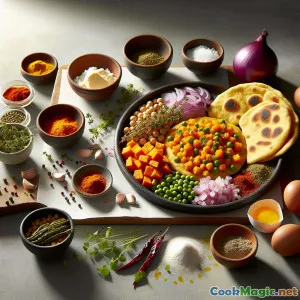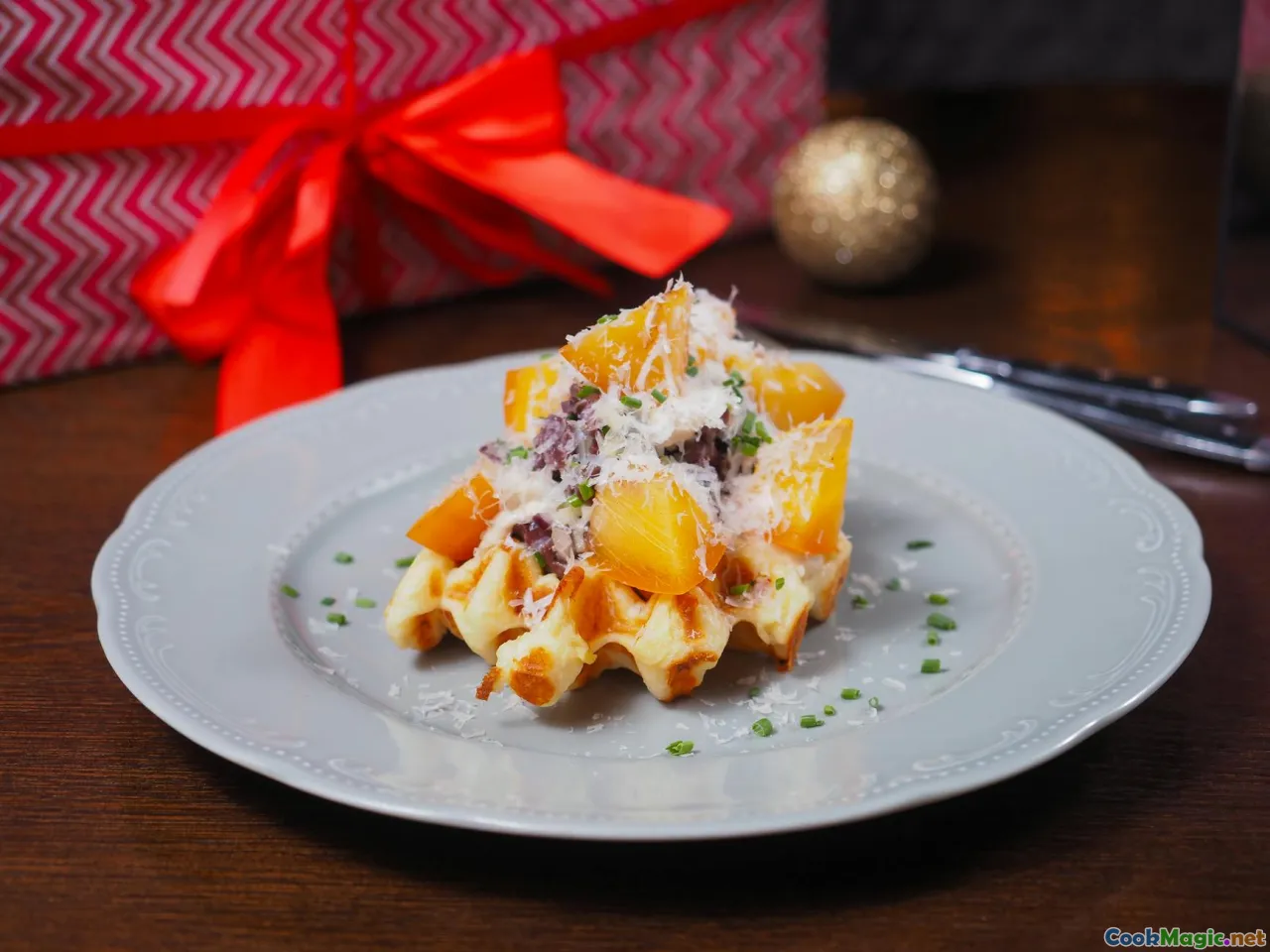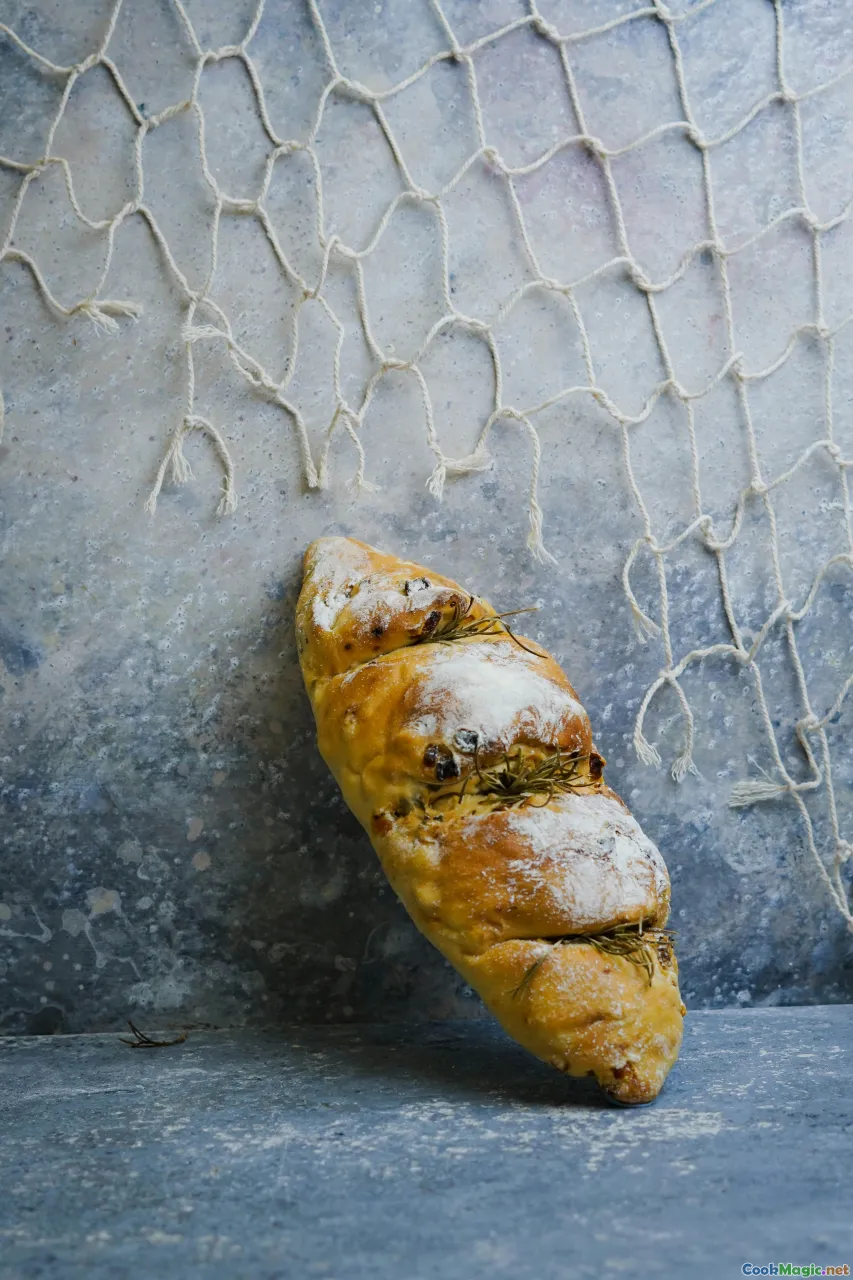
Golden Empanadillas: Pigeon Peas & Sweet Potato Bliss
(0 Reviews)Ingredients
-
200 grams Pigeon peas (cooked/drained)
(May use canned or freshly boiled)
-
1 medium (approx. 150g) Sweet Potato
(Peeled and diced)
-
1 small Red onion
(Finely chopped)
-
2 cloves Garlic
(Minced)
-
1 tbsp Fresh Thyme
(Leaves only)
-
1 tsp Smoked paprika
(Or plain paprika)
-
1 tsp Ground cumin
-
1/2 tsp Chilli flakes
(Adjust for heat level)
-
3/4 tsp Sea salt
(Or as needed)
-
1/4 tsp Black pepper
(To taste)
-
2 tbsp Olive oil
-
250 grams All-purpose flour
(For pastry)
-
100 grams Unsalted butter
(Cold, cubed)
-
40-50 ml Ice water
(Add gradually)
-
1 large Egg Yolk
(for egg wash)
-
2 tbsp Fresh Coriander
(Chopped, optional for garnish)
(May use canned or freshly boiled)
(Peeled and diced)
(Finely chopped)
(Minced)
(Leaves only)
(Or plain paprika)
(Adjust for heat level)
(Or as needed)
(To taste)
(For pastry)
(Cold, cubed)
(Add gradually)
(for egg wash)
(Chopped, optional for garnish)
Nutrition
- Servings: 6
- Serving Size: 2 empanadillas (about 130g each)
- Calories: 440 kcal
- Carbohydrates: 54 g
- Protein: 9 g
- Fat: 20 g
- Fiber: 7 g
- Sugar: 5 g
- Sodium: 450 mg
- Cholesterol: 38 mg
- Calcium: 58 mg
- Iron: 3.2 mg
Instructions
-
1 - Make Pastry Dough:
Combine flour and cold butter in a bowl. Rub together until crumbs form. Gradually add ice water, mixing just until the dough comes together. Wrap and chill for 30 minutes.
-
2 - Cook Sweet Potato:
In a small pan, simmer diced sweet potato in salted water for 8-10 minutes until soft but not mushy. Drain and set aside.
-
3 - Prepare Filling Base:
In a skillet over medium heat, add olive oil. Sauté onion for 2 minutes, then add garlic and thyme; cook 1 more minute until fragrant.
-
4 - Finish Filling:
Add sweet potato, pigeon peas, paprika, cumin, chilli flakes (optional), salt, and pepper to the skillet. Stir well and cook for 3-4 minutes until heated through.
-
5 - Cool the Mixture:
Transfer filling to a bowl; allow to cool to room temperature before stuffing the pastry.
-
6 - Shape & Fill Empanadillas:
Roll dough thinly and cut 12 circles (10-12 cm each). Place a tablespoon of filling in the center of each, fold into a half-moon, and crimp edges to seal.
-
7 - Egg Wash & Bake:
Preheat oven to 190°C/375°F. Optionally, brush empanadillas with beaten egg yolk. Bake on parchment-lined tray for 20-22 minutes or until golden brown.
-
8 - Serve & Garnish:
Cool slightly. Top with chopped coriander if desired and serve warm, ideally with a tangy dip or plain yogurt.
Combine flour and cold butter in a bowl. Rub together until crumbs form. Gradually add ice water, mixing just until the dough comes together. Wrap and chill for 30 minutes.
In a small pan, simmer diced sweet potato in salted water for 8-10 minutes until soft but not mushy. Drain and set aside.
In a skillet over medium heat, add olive oil. Sauté onion for 2 minutes, then add garlic and thyme; cook 1 more minute until fragrant.
Add sweet potato, pigeon peas, paprika, cumin, chilli flakes (optional), salt, and pepper to the skillet. Stir well and cook for 3-4 minutes until heated through.
Transfer filling to a bowl; allow to cool to room temperature before stuffing the pastry.
Roll dough thinly and cut 12 circles (10-12 cm each). Place a tablespoon of filling in the center of each, fold into a half-moon, and crimp edges to seal.
Preheat oven to 190°C/375°F. Optionally, brush empanadillas with beaten egg yolk. Bake on parchment-lined tray for 20-22 minutes or until golden brown.
Cool slightly. Top with chopped coriander if desired and serve warm, ideally with a tangy dip or plain yogurt.
More About: Golden Empanadillas: Pigeon Peas & Sweet Potato Bliss
Pigeon Pea & Sweet Potato Empanadillas: History, Inspiration & Pro Tips
The Empanadilla—a beloved hand pie— has its roots in Spanish and Latin American cuisines, but its relatives are found throughout the world’s baking tapestry. Pigeon peas, traditionally popular in Caribbean and South Asian kitchens, mesh gloriously with the British affection for flaky suet- or butter-based pastries and the vibrant orange sweetness of sweet potato. The resulting empanadillas are a celebration of heritage, innovation, and culinary globalization in every mouthful.
History & Cultural Significance
While "empanada" is a Spanish word, portable pies can be traced to many countries, including Britain (with Cornish pasties) and Jamaica (patties). In England, savory vegetarian hand pies are a warming feature at bakeries and farmer's markets. Pigeon peas, often associated with dal in Indian cuisine and rice dishes in Africa and the Caribbean, pair beautifully with root vegetables, creating layers of flavor and nutrition.
These empanadillas make use of classic British shortcrust technique but incorporate the kind of plant-powered filling you might find at a world foods market in modern London. This fusion represents the melting pot that is the UK food scene—where international ingredients are adapted for classic shells, creating a hybrid eating experience.
Why This Recipe Works & Unique Aspects
You’ll find that using butter— combined with just enough cold water—yields impossibly flaky pastry, while pigeon peas introduce protein, earthiness, and a surprising local availability in British ethnic groceries. Sweet potato brings a sweet, moist counterpoint, and smoky paprika as well as thyme bridge the flavors with comforting English herb garden notes.
Uniquely, this dish is vegetarian (and can be made vegan by swapping butter for a plant-based alternative and skipping the egg wash). Chilli flakes are optional: experiment with your own heat preference! Serve the empanadillas solo, as lunchbox fare, or as the star dish of a casual afternoon tea—doubling up on cross-cultural fun.
Pro Tips & Serving Suggestions
-
Dough: Keep all ingredients cold. You can use a food processor for extra-flaky results, pulsing only until the dough binds. Don’t overwork to avoid tough pastry.
-
Filling: Let it cool before stuffing to avoid a soggy crust.
-
Shapes: Try other shapes—triangles or rectangles—as long as you seal them well!
-
Accompaniments: Serve with mint yogurt, mango chutney, or a spicy peri-peri sauce.
-
Make-ahead: The uncooked empanadillas freeze beautifully—bake straight from the freezer, adding a few minutes to the baking time.
-
Leftovers: Their portability makes them excellent for picnic baskets, school lunches, or, in true street food style, as a quick dinner on the go.
Personal Thoughts
Growing up in a multicultural city, empanadillas always evoke community celebrations and lively evenings spent sharing different versions of hand pies. This recipe honors those essence of unity and exploration—there is comfort in each bite, as well as an invitation to experiment. Substitute ingredients based on what’s fresh in your pantry, or infuse global flavors that call to you—this dish is forgiving and adventurous. Nothing compares to opening the oven and seeing golden packets filled with fragrant, nourishing promise. Happy baking!

























